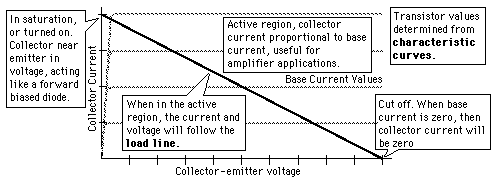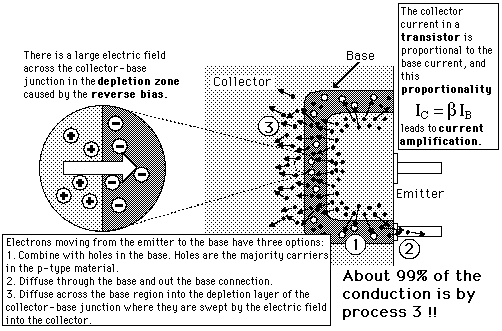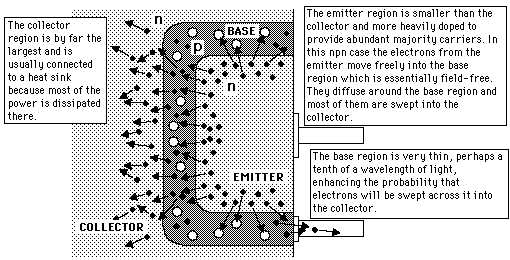Transistor Operation
A transistor in a circuit will be in one of three conditions- Cut off (no collector current), useful for switch operation.
- In the active region (some collector current, more than a few tenths of a volt above the emitter), useful for amplifier applications
- In saturation (collector a few tenths of a volt above emitter), large current useful for "switch on" applications.

| Transistor load line | Characteristic curves |
Semiconductor concepts
Semiconductors for electronics
| HyperPhysics***** Condensed Matter | R Nave |
 can be considered to be the controlling variable in determining transistor action. The collector current is related to this voltage by the Ebers-Moll relationship (sometimes labeled the Shockley equation):
can be considered to be the controlling variable in determining transistor action. The collector current is related to this voltage by the Ebers-Moll relationship (sometimes labeled the Shockley equation):


 can be called the
can be called the  ,
,  and the temperature.
and the temperature.  .
. 


 can take values in the range 20 to 200 and is not a constant even for a given transistor. It increases for larger emitter currents because the larger number of electrons injected into the base exceeds the available holes for recombination so the fraction which recombine to produce base current delines even further.
can take values in the range 20 to 200 and is not a constant even for a given transistor. It increases for larger emitter currents because the larger number of electrons injected into the base exceeds the available holes for recombination so the fraction which recombine to produce base current delines even further.